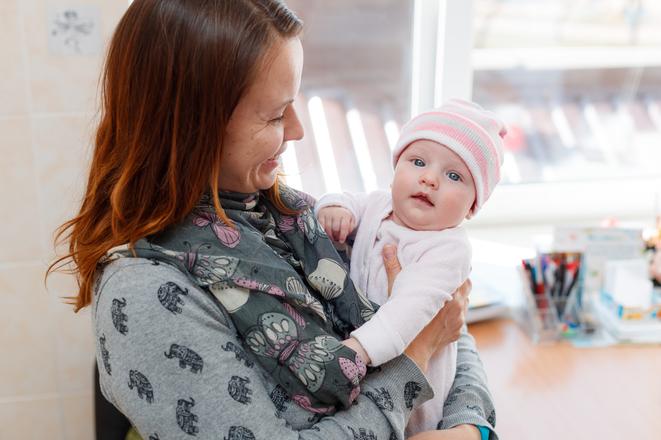Have you ever had a conversation with someone who disagreed with you on the benefits of vaccines? It’s not an easy one. Vaccines are critical yet polarizing, sometimes due to the lack of information about them, sometimes due to concerns people have.
Look back at that conversation. Is there anything you could have done better?
Through UNICEF, I learned a lot about vaccines and vaccine hesitancy, and I did so by meeting with pediatricians that were kind enough to dedicate some of their time to us. The same happened a couple of weeks ago in Slovakia, when we met with Slovak and Ukrainian pediatricians to talk about immunization.
The question we posed was simple: “When we meet a parent that hesitates to vaccinate their child, what should we do?” Here’s what we know now.
Step 1: Listen actively
We will hardly be able to convince a parent who is hesitant to vaccinate their child or themselves unless we have a clear idea of why they may be reluctant. This entails listening to them actively.
Listening actively helps people to feel heard and understood. By using gestures such as encouraging smiles and affirming nods you can show that you are engaged with what they are saying and really care. Sometimes, summarizing what the person has said, paraphrasing and clarifying, can also be useful.
Show that you are listening intently to what they have to say by asking them questions like “what?”, “why?” and “how?”, as well as other probing open-ended questions to get deeper into the sources of their hesitancy.
Step 2: Understand their worries
Not all hesitant people have the same reasons to be worried. Some may have concerns about the potential side-effects of vaccines, others about the provenience or brand of the jab and others again may simply not know enough about them.
It's important that we create a safe space where they feel they can express themselves freely without being judged. A good first step is usually acknowledgement. In conversations, you can just summarize what the person perceives without further evaluation. Be careful about the feedback you give, including non-verbal and paraverbal feedback.
Try to ask questions in a calm and respectful way, so the other person doesn’t feel pressured. Make sure your counterparts understand that they are not obliged to answer your questions.
Step 3: Be compassionate and patient
During these conversations, what we really want to avoid is being perceived as arrogant, aggressive or patronizing. This may make the other person feel attacked and trigger a defensive response. At that point, the chat would be over.
Instead, we want to control the tone of voice and the words we use. Rather than seeing it as us teaching parents a valuable lesson, look at the discussion as if you were slowly accompanying them on a journey. Their concerns should be addressed in a respectful and courteous way. After all, the ideas some have about vaccination may be deeply rooted within them, and one monologue will not change that.
Changing attitudes can sometimes be a long and difficult process, so don’t expect it to be done in one session. Make sure the person feels comfortable enough to come back to you and be sure to follow up on the discussion.
Step 4: Make sure you stress the importance of vaccines
Often, the best way to convince parents to vaccinate their children is not by performing an ode to immunization, but rather by being clear and direct about the dangers of not getting vaccinated and the benefits of doing so. To gather more information, you can talk to a pediatrician or doctor who will speak on the basis of medical knowledge or evidence.
Pediatricians are the ones that know most about vaccines for children, reason why UNICEF and its partners are training them on how to best communicate medical information. However, dealing with vaccine hesitancy is everyone’s responsibility. Hopefully, these 4 tips will help when you engage in conversations on vaccines again in the future.


 Margarita, 4 months old, just received her DTP and polio vaccines. (source: UNICEF/UN0201057/Krepkih)
Margarita, 4 months old, just received her DTP and polio vaccines. (source: UNICEF/UN0201057/Krepkih)